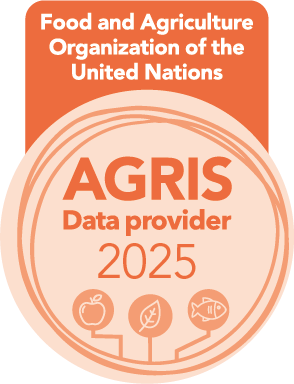Assessment of biochemical profile among patients of Microbiological Quality Assessment of Bakery Products Available in Lahore, Pakistan
Microbiological Quality Assessment of Bakery Products Available in Lahore, Pakistan
DOI:
https://doi.org/10.54393/df.v1i01.1Keywords:
Bakery products, Microbial assessment, Coliform bacteria, Fecal Coliform bacteria, Yeast.Abstract
Bakery items are a vital element of a well-balanced diet, and supermarket shelves now stock a wide range of them. Bakery items are the most popular ready-to-eat foods (REF).Objective:To assess the microbial quality of bakery foods (Bread, Cake and patties) and check the total plate count (TPC), bacterial and yeast count Methods:The analysis of the microbial quality of bakery products was determined for three different bakery products (bread, cake and patties) at ten different locations collected from a renowned bakery in Lahore, Pakistan. The samples were assessed under complete hygienic conditions by standardized plate count (TPC) and MPN method. Micro-organisms (Coliform, Fecal Coliform and Yeast) were lately confirmed by their morphological characteristics and biochemical tests Results: Among the three commodities, bread was found to be highly contaminated by micro-organisms and the total plate count recorded was 4.7 x 105cfu g-1collected from sector I9 which is not consumable. Whereas Patties showed the number of TPC as 1.6 x 105 cfu g-1also collected from sector I9. Cake was revealed as least infected bakery product i.e., 5.7 x 104 cfu g-1. The above results showed that sector I9 is highly contaminated and a threat for health. Bacterial plate count (Coliform and Fecal Coliform count) was highly measured in bread as 460 MPN g-1 taken from sector I5 where as it remains under the permissible limit determined by WHO, 1994 in remaining sectors Conclusions:In conclusion the bakery food is contaminated by the use of un-hygienic water, miss handled during the process after baking i.e., slicing, serving and packaging. To avoid a possible epidemic of food borne illness, competent authorities should conduct a stricter and more stringent inspection of REFs sold to clients in bakeries.
References
Koukoutsis, J., et al., In vitro studies to control the growth of microorganisms of spoilage and safety concern in high‐moisture, high‐pH bakery products. Journal of food safety, 2004. 24(3): p. 211-230 https://doi.org/10.1111/j.1745-4565.2004.tb00385.x.
Pina-Pérez, M.C., et al.,Antimicrobial potential of macro and microalgae against pathogenic and spoilage microorganisms in food. Food chemistry, 2017. 235: p. 34-44 https://doi.org/10.1016/j.foodchem.2017.05.033.
Rodríguez-Artalejo, F., et al., Consumption of bakery products, sweetened soft drinks and yogurt among children aged 6–7 years: association with nutrient intake and overall diet quality. British Journal of Nutrition, 2003. 89(3): p. 419-428doi: https://doi.org/10.1079/BJN2002787.
Santaliestra-Pasias, A., et al.,Effect of two bakery products on short-term food intake and gut-hormones in young adults: a pilot study. Int. J. food Sci.Nutr., 2016. 67(5): p. 562-570 https://doi.org/10.1080/09637486.2016.1180348.
Zakharchenko, S., E. Sperling, and L. Ionov, Fully biodegradable self-rolled polymer tubes: a candidate for tissue engineering scaffolds. Biomacromolecules, 2011. 12(6): p. 2211-2215 https://doi.org/10.1021/bm2002945.
Madrigal, C., et al., Energy intake, macronutrient profile and food sources of spanish children aged one to< 10 years—results from the EsNuPI Study. Nutrients, 2020. 12(4): p. 893 https://doi.org/10.3390/nu12040893.
Beloglazova, K., et al.,The effect of biodegradable polymer packaging on the quality of bakery products. Research Journal of Pharmaceutical, Biological and Chemical Sciences, 2019. 10(2): p. 747-752.
Varga, L., Microbiological quality of commercial dairy products. 2007.
Manea, L., et al.Overview on the microbiological quality of some meat products with impact on the food safety and health of people. in 2017 E-Health and Bioengineering Conference (EHB). 2017. ieee doi:10.1109/ehb.2017.7995372.
Control, C.f.D. and Prevention, Vital signs: incidence and trends of infection with pathogens transmitted commonly through food--foodborne diseases active surveillance network, 10 US sites, 1996-2010. MMWR. Morbidity and mortality weekly report, 2011. 60(22): p. 749-755.
Adjrah, Y., et al., Socio-economic profile of street food vendors and microbiological quality of ready-to-eat salads in Lomé. International Food Research Journal, 2013. 20(1): p. 65.
Pérez-Rodríguez, F., et al., Evaluation of hygiene practices and microbiological quality of cooked meat products during slicing and handling at retail. Meat science, 2010. 86(2): p. 479-485 https://doi.org/10.1016/j.meatsci.2010.05.038.
Ballester-Sánchez, J., et al.,Development of healthy, nutritious bakery products by incorporation of quinoa. Foods, 2019. 8(9): p. 379 https://doi.org/10.3390/foods8090379.
Todd, E.C., Epidemiology of foodborne diseases: a worldwide review. World health statistics quarterly 1997; 50 ( 1/2): 30-50, 1997.
Das, K., A. Sarkar, and A. Hossain, Isolation of pathogenic microorganisms and determination of their antibiotic resistance patterns collected from different bakery products of Dhaka city. Food Research, 2020. 4(4): p. 1312-1316.
O’Brien, S.S., Bacterial contamination of commercial yeast. 2004, Faculty of Science, University of the Witwatersrand.
Abdullah, N., A. Nawawi, and I. Othman, Fungal spoilage of starch-based foods in relation to its water activity (aw). Journal of Stored Products Research, 2000. 36(1): p. 47-54 https://doi.org/10.1016/S0022-474X(99)00026-0.
Syamaladevi, R.M., et al.,Influence of water activity on thermal resistance of microorganisms in low‐moisture foods: a review. Comprehensive Reviews in Food Science and Food Safety, 2016. 15(2): p. 353-370https://doi.org/10.1111/1541-4337.12190.
Deng, L.-Z., et al., Recent advances in non-thermal decontamination technologies for microorganisms and mycotoxins in low-moisture foods. Trends in Food Science & Technology, 2020 https://doi.org/10.1016/j.tifs.2020.10.012.
Meng, J., et al.,Enterohemorrhagic Escherichia coli.Food microbiology: Fundamentals and frontiers, 2012: p. 287-309 https://doi.org/10.1128/9781555818463.ch12.
Zealand, A.N., Food Standards Australia New Zealand. 2009.
Downloads
Published
How to Cite
Issue
Section
License
Copyright (c) 2020 DIET FACTOR (Journal of Nutritional & Food Sciences)

This work is licensed under a Creative Commons Attribution 4.0 International License.
This is an open-access journal and all the published articles / items are distributed under the terms of the Creative Commons Attribution License, which permits unrestricted use, distribution, and reproduction in any medium, provided the original author and source are credited. For comments












